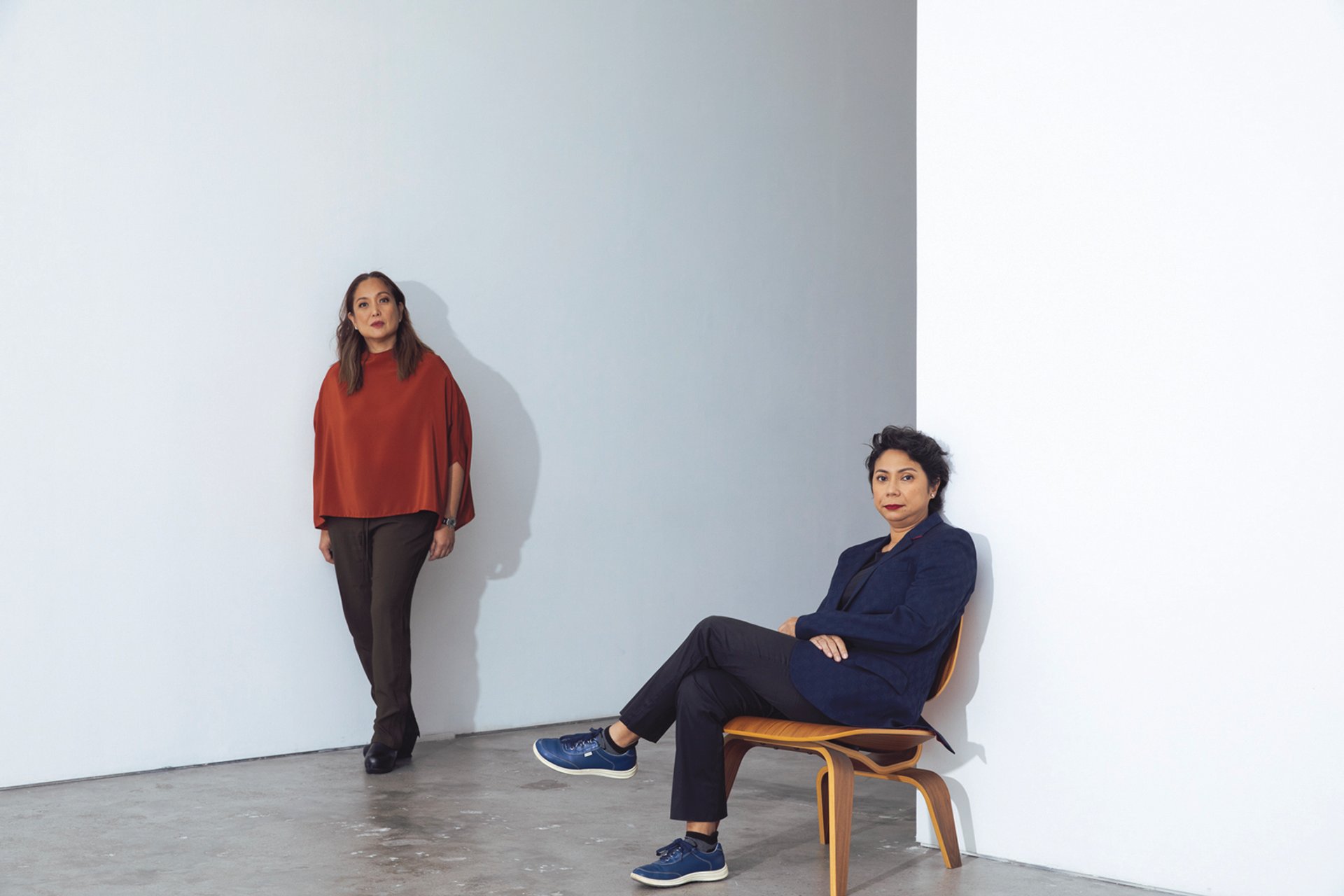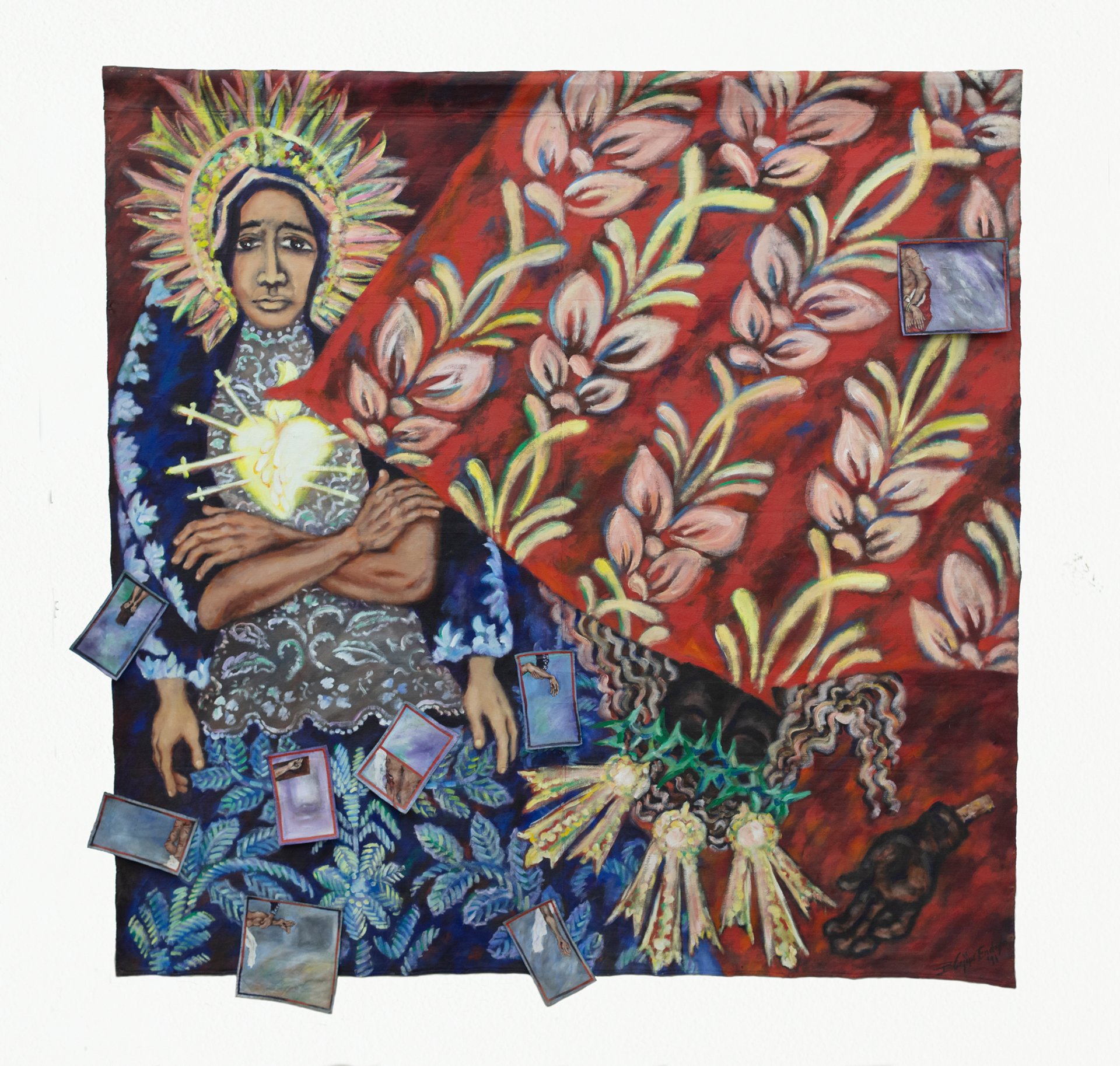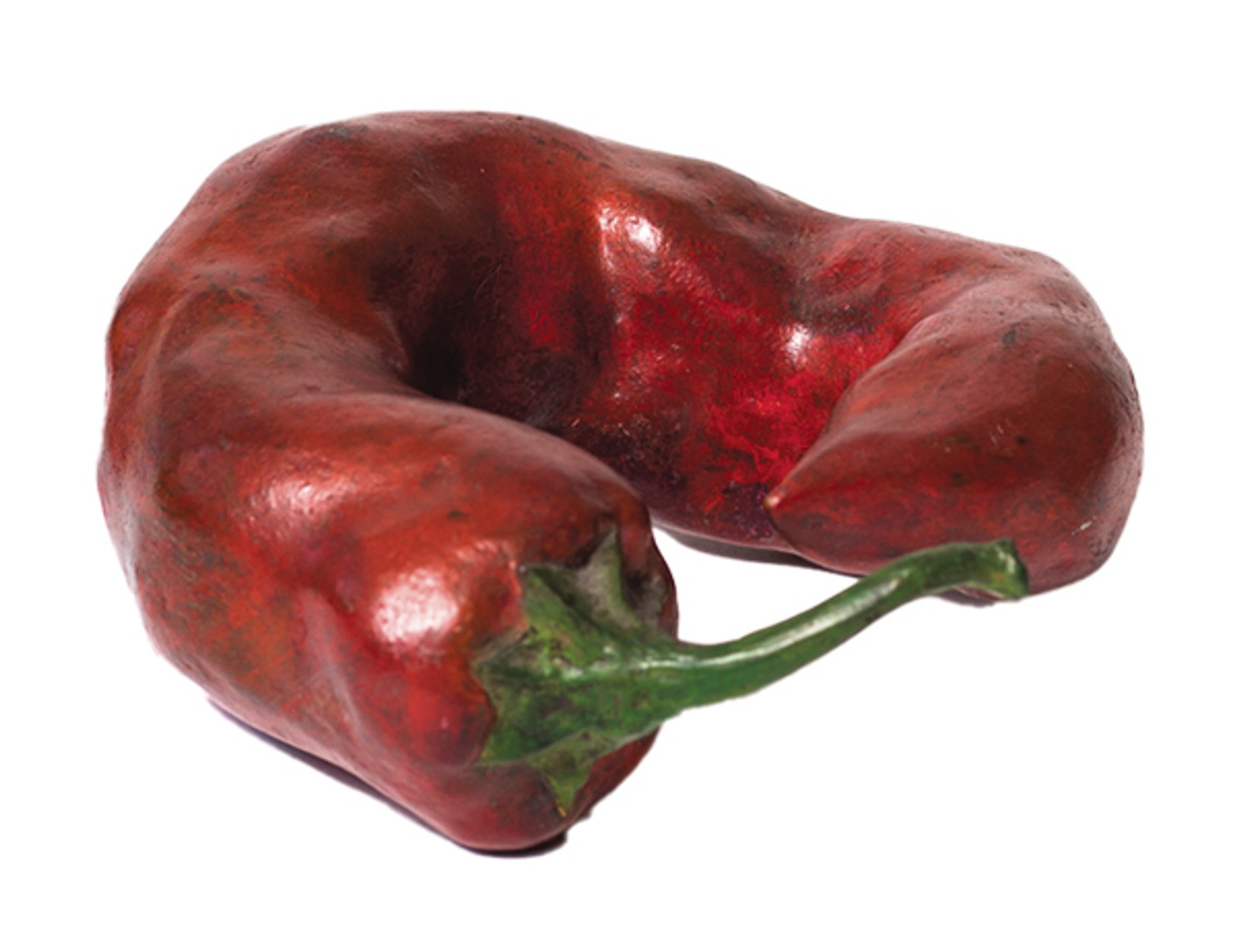Asian galleries move westward: their growing presence and influence in New York
In 1982, six artists in New York City with strong links to Hong Kong formed Epoxy, a collective named after the binding material epoxy resin. Much like the group’s namesake, and despite their divergent practices, the members collaborated to create experimental works reflective of their diasporic experiences and served as facilitators of intercultural dialogue.
In the history of contemporary art in New York, Epoxy is one among a series of groups, collectives and institutions that have been active in creating spaces highlighting Asian and diasporic voices. The city is now in the midst of a new infusion of energy, directly from Asia, with several galleries opening outposts in New York in recent years. The latest is the Hong Kong-based Kiang Malingue, which opens its doors on the Lower East Side on 9 May.
The gallerist couple Edouard Malingue and Lorraine Kiang were delighted to find their Lower East Side space, for which they are paying a similar rent to their former warehouse space in Tin Wan, a sleepy industrial area on the south side of Hong Kong Island. “It was a no-brainer,” Malingue says. The new location is a 3,500 sq. ft space at 50 Eldridge Street that was formerly an artist’s studio. “We like the vibe of the Lower East Side and that [the gallery] feels like the kind of space that could be a meeting point, because it doesn’t have a clinical white-cube feeling,” Malingue says, noting that they have done minimal renovations. “It really goes along with establishing that bridge, that discussion between the two cities and the two continents.”
They will inaugurate the space with The Lights from the Deep Mountains, a solo show by the young Japanese artist Hiroka Yamashita, whose aqueous and surreal paintings are inspired by scenes from daily life. Kiang Malingue’s roster at present largely consists of emerging and established artists from Asia as well as artists of the Asian diaspora. The gallery’s New York programme will serve as an extension of what it has done in Hong Kong since its founding in 2010. “It’s for our artists to gain more exposure and see what comes out of it,” Kiang says. “Even if they get to work with an American gallery, they don’t necessarily get represented the way they want. The angle and positioning isn’t always suitable.”
Hiroka Yamashita’s The Rain That Fell Fifty Years Ago (2025)
Courtesy Kiang Malingue. Photo: Yuki Moriya
Kiang Malingue is following in the footsteps of other galleries of Asian origin. In 2022, the Manila-based Silverlens expanded its operations with a space in Chelsea. The following year, Taipei’s Nunu Fine Art opened on the Lower East Side and Hong Kong’s Alisan Fine Arts opened on the Upper East Side. Bank, one of Shanghai’s most closely watched galleries, opened a temporary location on the Lower East Side in March; its present show (until 14 June) is devoted to the late Chinese American artist Ching Ho Cheng (1946-89).
This wave of New York outposts is an inversion of the influx of Western galleries to Asia over the past 15 years. First the blue-chip dealers opened in Hong Kong; then they went to Seoul. Now the winds seem to be blowing from east to west. “It’s important to have eyes that are coming from Asia, so it’s not eyes from the west looking east,” Kiang says.
Easier access to US museums is also a significant factor in propelling these galleries westward. “We expect a fairly quick response from institutions, because we’re bringing the material closer to them,” Kiang says. She cites the Singaporean artist Ho Tzu Nyen’s exhibition Time & the Tiger at Bard College’s Hessel Museum of Art last year and the Hong Konger Samson Young’s solo show at the San Francisco Museum of Modern Art (SFMOMA) (until 22 June) as examples of US institutional interest in the gallery’s artists, which factored into the decision to expand to New York.
‘A huge blind spot’
Isa Lorenzo and Rachel Rillo, co-owners of Silverlens, opened their 2,500 sq. ft space in Chelsea in 2022 to extend their Manila-based programme, which has a strong focus on Southeast Asian art. Lorenzo says that US museums “have a huge blind spot, and it’s Southeast Asian art. We need to show them who we are, and it needs to become part of the lexicon of contemporary art.” She adds that museums “need something from our part of the world, and they all have some Asian or Asian American members of staff—some kind of us—who are interested in our programme. They’re the ones doing the research and shepherding the information through the system.”

Rachel Rillo (left) and Isa Lorenzo of Silverlens
Sweet Melody Shots
The reception for Silverlens’s stateside programme has so far been extremely positive among collectors and curators, according to the gallery’s founders. Lorenzo says she had set a goal this year to bring four curators to Manila for studio visits and tours, and by mid-March there were more than 30 visitors. Concurrent with Frieze New York, the gallery is opening a show by the Filipina feminist artist Imelda Cajipe Endaya, organised by the former Brooklyn Museum curator Eugenie Tsai (8 May-21 June). Endaya has been making work for 50 years but has largely been overlooked outside of niche circles in the Philippines.

Silverlens gallery is showing work by Imelda Cajipe Endaya (Tutol ni Dolorosa, 1991)
Courtesy Silverlens
The trend of institutions belatedly recognising long-overlooked artists has bolstered the international reputations of several Asian and Asian American artists. Last year MoMA PS1 held a retrospective of one of Silverlens’s artists, the Filipino-born American Ivatan painter Pacita Abad (1946-2004). There is a retrospective of the Japanese American artist Ruth Asawa (1926-2013) at SFMOMA (until 2 September), which travels to New York’s Museum of Modern Art later this year (19 October-7 February 2026). And the Isabella Stewart Gardner Museum in Boston is staging a show on the China-born, New York-based artist Ming Fay (1943-2025) this summer (26 June-21 September).

(1990s) by Ming Fay, represented by Alisan Fine Arts
Courtesy Alisan fine arts
Fay was a member of the Epoxy group and began working with Alisan Fine Arts in 1985. Founded by Alice King in the 1980s and now helmed by her daughter Daphne King-Yao, who was born in New York, the gallery has three spaces in Hong Kong and is known for a programme that focuses on Chinese contemporary and ink art.
Dan Chen, the director of Alisan’s Manhattan space, says the gallery began working with several New York-based artists in the 1980s—including Fay, Walasse Ting and Chinyee—which informed the gallery’s decision to expand to the US. “It’s really the institutions that have led the way,” Chen says of the visibility of Asian and Asian American artists in the US, citing the Cantor Arts Center at Stanford University and the Los Angeles County Museum of Art, where he recently attended the opening of Line, Form, Qi: Calligraphic Art from the Fondation INK Collection (until 19 October), which features works by several of the gallery’s artists. “They needed to fill in the gaps, because they realised that there’s a whole generation or two of Asian American artists in the US who were completely overlooked, or first-generation Asian artists who had emigrated here. It’s been happening at the institutional level. They’ve been moving first, and now galleries are following suit.”
Museum acquisitions
Chen notes that many of the younger Asian American artists on Alisan’s roster have been acquired for museums’ collections. The New York artist Kelly Wang, for instance, has had works acquired by the Smith College Museum of Art and the Asian Art Museum of San Francisco. Her canvases are featured in Alisan’s New York show Painting as Method (until 21 June), alongside those of fellow Asian American artists Mimi Chen Ting and Yifan Jiang.
While galleries are playing a significant role, the rising visibility of Asian American artists is also based in part on grassroots efforts. Stilllife, a collective co-founded by international and diasporic students in 2022 to facilitate dialogue between artists in New York and East Asia, has organised shows and community events. Its latest, On Cue, is at a pop-up space at 1 Kenmare Street on the Lower East Side (until 11 May).
The Brooklyn-based collectors Steven Abraham and Lisa Young founded the non-profit The Here and There Collective to support artists of the Asian diaspora. What began as a series of studio visits during the pandemic, and virtual tours with those outside of New York, grew into an idea for supplementing the cultural ecosystem. “It got us thinking about the diaspora and the importance of creating an archive of the incredible artists working today,” Abraham says. “Over time, we also recognised the need for a more structured approach—one that could provide ongoing support and foster real growth within the community.” This sustained approach led them to create a studio residency and organise regular community-building events.
The network of groups, organisations and galleries is constantly expanding, with many other Asian-run commercial spaces focused on artists of the diaspora and the region opening in recent years—including Latitude Gallery, YveYang Gallery, Rainrain Gallery, Long Story Short and Island. As these galleries settle in, they are increasingly becoming essential destinations for collectors and curators.
“They don’t even think of us as a Southeast Asian gallery,” Silverlens’s Lorenzo says. “We’re just a contemporary-art gallery, which is ultimately the point. You don’t want to pigeonhole yourself, and we don’t want to identify ourselves with geography as much as we want to identify ourselves with ideas.”
- Hiroka Yamashita, The Lights from the Deep Mountains, Kiang Malingue, 5 September 2024–28 June 2025
- Ching Ho Cheng: Tracing Infinity, Bank, 2 May–14 June 2025
- New Work: Samson Young, SFMOMA, 21 December 2024–June 22, 2025
- Imelda Cajipe Endaya, There is Still a Tomorrow, Mother, curated By Eugenie Tsai, Silverlens,8 May–21 June 2025
- Ruth Asawa: Retrospective, SFMOMA, 5 April–September 2, 2025 and MoMA, 19 October 2025–7 February 2026
- Ming Fey: Edge of the Garden, Isabella Stewart Gardner Museum, 26 June–21 September 2025
- Line, Form, Qi: Calligraphic Art from the Fondation INK Collection, LACMA, 6 April–19 October 2025
- Painting as Method: Yifan Jiang, Mimi Chen Ting, and Kelly Wang, Alisan Fine Arts, 1 May–21 June 2025




